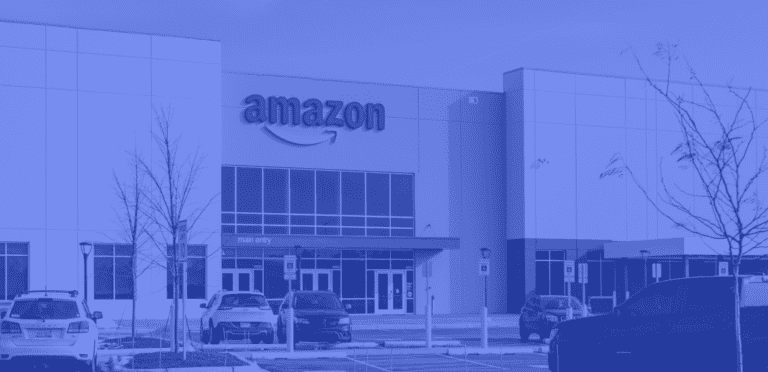Your data has value. So much value that it’s powering colossal revenue gains and growth for some of the largest retailers in the world (think Walmart, Amazon, etc.). How does your data generate revenue for retailers? The short answer is data monetization. Discover how retail data monetization works and how you can begin reaping the benefits of your data too.
What is Data Monetization?
Data monetization is the process of using data to generate measurable economic benefits. With third-party cookies no longer an option as a data collection source, businesses have turned to zero-party and first-party data. Zero-party data is what a customer intentionally and proactively shares with a business. This can include what they like, what they plan to buy, or their personal details. It’s extremely accurate because it comes straight from the source, no guessing involved. Businesses that figure out how to collect this kind of data in a smart and legal way can use it to make online shopping experiences more personalized and tailored to each customer.
First-party data sharing is data shared directly between consumers and businesses via purchases, transactions, and other exchanges. For deriving invaluable insights into customer preferences and behavior, first-party data collection has become crucial for businesses to remain agile and in touch with their customers. Businesses need first-party data to drive key business decisions and data monetization provides the transactional backdrop that makes this possible.
The global market for data monetization was estimated to be $1.6 billion in 2020 and is projected to reach a total value of $4.1 billion by 2026! Despite this, most retailers are either sitting on a mountain of unutilized first-party data or simply don’t collect data due to a lack of awareness and/or technology.
By not leveraging this data to its full potential, retailers are missing massive revenue and upsell opportunities via data monetization.
Most retail organizations have a trove of customer data sitting in their databases or a third-party data platform. This data comes from purchases, transactions, exchanges, and loyalty programs. This data, when used strategically and ethically (obtained directly from consumers) can be used to power data monetization services that can improve retail revenue streams, improve supplier and vendor partnerships, and provide more personalized customer experiences.
How does data monetization work?
There are two main categories of data monetization: internal and external data monetization. Both of these categories provide an array of potential monetization opportunities.
Internal data monetization uses data and analytics to inform decisions and strategies that improve how a business operates and performs. By utilizing data science and an advanced analytics ecosystem, organizations can use their data to create new products and services and improve internal operations and processes.
External data monetization is the process of using first-party data as an asset to create new products or services and selling them to external third parties. This could include data analytics, reporting, trends and forecasting, and so on. A business that collects customer data can either provide paid access to this data or sell insights derived from this data to other businesses looking to improve their operations and performance.
For retailers, most of their data sits in extensive customer databases, collected from customer transactions and loyalty programs. They can use this data to drive internal data monetization by enhancing marketing and communication campaigns, improving inventory planning and management, and offering new products and services. Or, they could use this data to power external data monetization by offering retail media solutions or by selling data insights.
How can Retailers Use Data Monetization?
Retail media is an advertising business that a retailer establishes to sell its first-party data, as well as advertising space, to other companies. Companies utilizing a retailer’s advertising space will pay to have their adverts (created and targeted using first-party data) appear on the retailer’s on-site channels (including websites, mobile apps, and marketing emails), social media pages like Google Apple, and Facebook pages, and in-store signage.
Some real-world examples include Walmart’s Walmart Connect and Walgreen’s Walgreens Advertising Group, both of which offer retail media services to third-party sellers.
Retail media networks
A retail media network is an advertising infrastructure that consists of a collection of digital platforms and channels, including websites, apps, and digital pages, that are available as advertising space to third-party brands. These networks help to deliver contextually relevant adverts to shoppers browsing the channels, based on their first-party data. A key advantage of leveraging retail media networks, aside from more targeted advertising prowess, is the ability for businesses. to measure ad campaign performance that provides clear ROI on ad spend.
Buying advertising space on a retail media network can help businesses of all sizes across industries roll out and expand their digital marketing strategies. This is especially beneficial for smaller businesses that might not have the budget or experience necessary for building a robust and complex digital marketing campaign, as well as measuring it. Most retail media networks offer ad space, first-party data, and analytics as a service as part of their core offerings.
Offering the platform and opportunity to put brands in front of their customers, as well as access to relevant first-party customer data, make retail media networks one of the most popular and lucrative long-term means of data monetization for retail giants around the world.
The benefits of data monetization
For both online and brick-and-mortar retailers capitalizing on data monetization, there are numerous benefits. Data monetization as a strategy benefits all involved parties, particularly in a multi-brand store environment. Let’s take a closer look at the multi-fold benefits that leveraging data monetization can provide.
Strengthens partnerships
For multi-brand retailers like Walmart and Amazon, data monetization can drive valuable insights that strengthen partnerships and loyalty with different brands. Retailers that sell insights extracted from first-party customer data help brands and suppliers boost their online and in-store performance. The insights unlocked provide a window into shopper behavior and trends that allow brands to better understand and cater to the needs and preferences of shoppers and adjust their processes accordingly.
Improves operational efficiency
Data insights taken from customer browsing, purchasing, and returns history bring a depth of understanding that surface-level observations just can’t replicate. Retailers providing these data insights (or the data necessary to power them) empower other businesses to make data-driven decisions that improve their operational efficiencies. For instance, a business that can identify and determine which target audiences are most interested in buying a product and where they’re located improves demand planning and inventory management.
Develops new services
Data can also be used to fuel innovation and create new services to enhance the customer experience. This is relevant for both retailers and businesses buying data and/or insights from retailers. Retailers and other businesses can use their in-store data to develop location-based services like an app that provides personalized, real-time offers to customers based on their in-store location, special promotions, and tailored communications that improve the customer experience for shoppers across different regions. Customer data can also be collected to help analyze and improve the success of new marketing campaigns and partnerships, improving the ROI of these initiatives.
Invisibly
With data monetization delivering revenue returns estimated to be in the millions for large retailers like Walmart, eBay, and Amazon, there’s no question that the data you generate and share is a valuable business asset. Wouldn’t it be great to have the chance to reap the benefits of your data’s value too?
With Invisibly, you can. Invisibly is an app dedicated to creating a more active, connected digital ecosystem through the ethical exchange of zero-party data. Invisibly gives you access to a range of premium brand rewards in exchange for your consented data. The data collected is the data you decide to share – putting you in direct control of your data, always.

Invisibly
See your data work for you.
